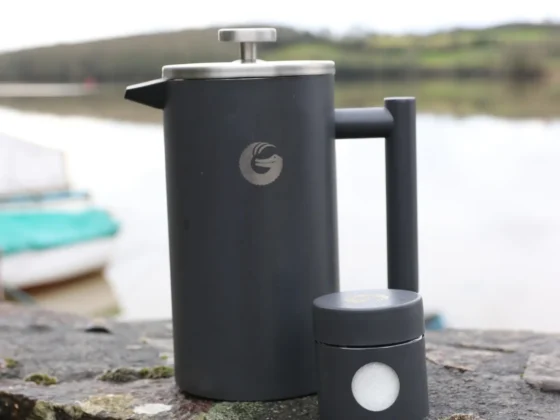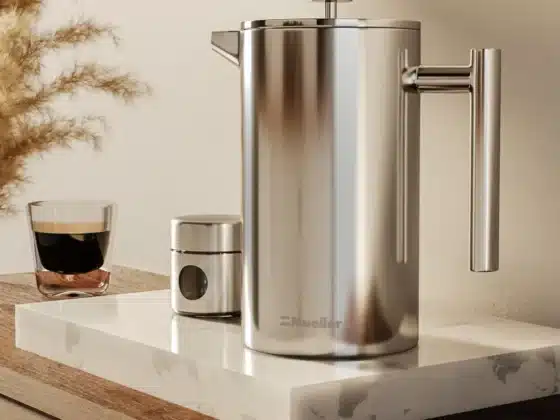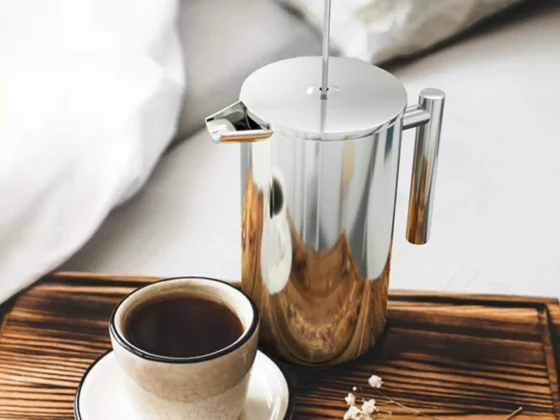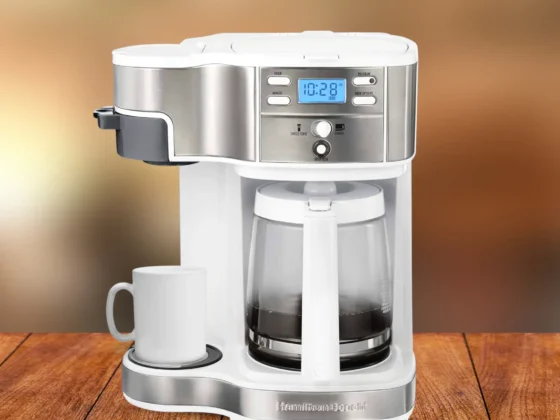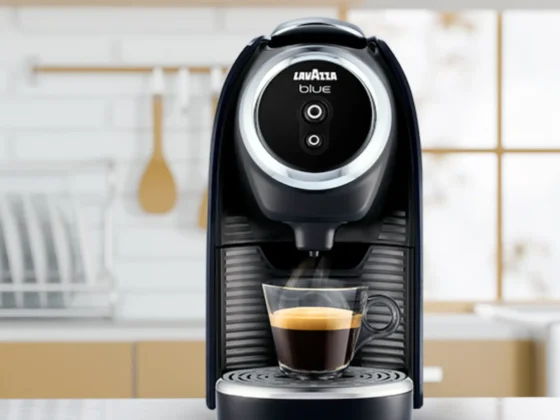In the fascinating world of coffee aficionados, the debate between the best Moka pot and the espresso coffee maker has always been a brew of contention. At the heart of this discourse is the quintessential question: which offers superior coffee excellence? As we dive deeper into the Moka pot vs espresso machine debate, we’ll explore various facets – from cost and accessibility, the sustainability of brewing, to their environmental footprint. Both tools have their merits, whether it’s the Moka pot’s eco-conscious design, its ability to craft a nearly espresso-quality brew on a budget, or the espresso machine’s unparalleled precision and rich flavor profile. This exploration seeks not just to determine a winner but to appreciate the unique contributions each brings to our daily coffee rituals.
Not in the mood for reading? Tune in to the audio version of the article below.
- Introduction & Key Takeaway
- https://app.mysoundwise.com/tracks/16986160433950796e.mp3
- Historical Origins and Popularity
- https://app.mysoundwise.com/tracks/16986160612561455e.mp3
- Moka Pot vs Espresso Machine: How They Work
- https://app.mysoundwise.com/tracks/16986160859175989e.mp3
- Espresso Machine vs Moka Pot: Flavor Profiles
- https://app.mysoundwise.com/tracks/16986161129332671e.mp3
- Moka Pot vs Espresso Machine: Cost and Accessibility
- https://app.mysoundwise.com/tracks/16986161394257129e.mp3
- Environmental Considerations: Sustainability in Brewing
- https://app.mysoundwise.com/tracks/16986161678022759e.mp3
- Conclusion & FAQs
- https://app.mysoundwise.com/tracks/16986161983559434e.mp3
Espresso Machine vs Moka Pot: Key Takeaway
- Affordability vs. Precision: Moka pots are cost-effective and produce rich brews, while espresso machines ensure precise, authentic shots.
- Environmental Impact: Moka pots are eco-friendly, often using no power, whereas some espresso machines have a notable energy footprint.
- Maintenance & Lifespan: Moka pots boast durability with minimal upkeep, whereas espresso machines can have higher overall costs.
- Taste & Quality: Moka pots deliver strong coffee close to espresso, but purists may prefer espresso machines for a true barista shot.
- Convenience: Moka pots are user-friendly for everyday use, while espresso machines cater to dedicated coffee lovers with advanced features.
Historical Origins and Popularity
The world of coffee has seen a plethora of brewing methods and apparatuses, each telling its own tale, each adding a drop to the vast ocean of coffee culture. Two specific methods stand out in their historical significance and widespread use: the iconic Moka pot coffee brewer from Italy and the transformative espresso machines that revolutionized coffee consumption.
The Birth of the Moka Pot: Italy’s Iconic Brewer
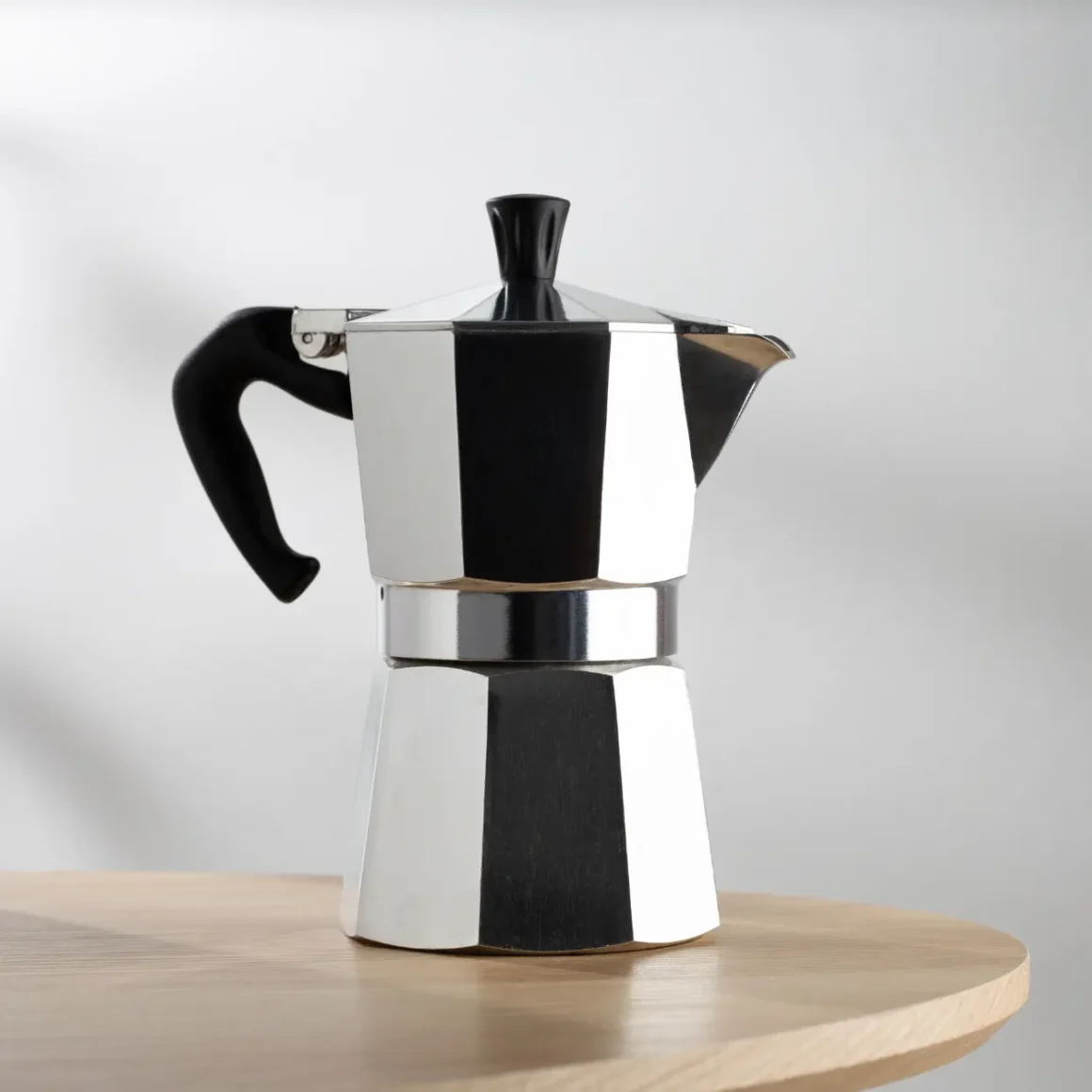
In the early 20th century, a brewing revolution took place within the confines of Italy. Coffee, a beverage formerly relished predominantly in public spaces, began a journey towards domesticity. Enter the coffee pot history.
- Historical Backdrop: This iconic coffee maker emerged in 1933, a period marked by the political and economic tumult of fascism and the Great Depression in Italy.
- Conception: Luigi Di Ponti ideated this unique brewing mechanism. However, it was Alfonso Bialetti, an astute businessman, who recognized its potential, acquiring the patent and catapulting it to fame with the label “Moka Express.” (1)
- Design and Functionality: Constructed mainly from aluminum with Bakelite handles, this brewer operates by propelling steamed hot water through coffee grounds due to vapor pressure. Modern versions have diversified into stainless steel and even luxury designs like “Venus.”
- Global Acknowledgment: Beyond its utility, this coffee maker is a piece of art, securing spots in prestigious institutions such as the Museum of Modern Art and Cooper–Hewitt, National Design Museum.
In essence, this coffee machine, with its distinctive aesthetic and functional excellence, transformed the very ethos of coffee brewing, making quality coffee accessible in the comfort of one’s home.
The Rise of Espresso Machines: Revolutionizing Coffee Culture

The espresso, a concentrated coffee brew, has its roots intertwined with innovative machinery that evolved over the years.
- The Genesis: The journey began in 1884 with Angelo Moriondo’s patent for a bulk brewing apparatus. This was refined by Luigi Bezzera in 1901, resulting in a more versatile machine. (2)
- Espresso’s Proliferation in Italy: In Italy, the surge in espresso consumption paralleled the processes of industrialization and urbanization, particularly in Turin, Genoa, and Milan in the northwest region of the country.
- Regulations and the “Stand at a Bar” Culture: During the Fascist era, regulations were imposed on the pricing of coffee consumed while standing, fostering the development of the “stand at a bar” coffee culture.
In a nutshell, espresso coffee machines revolutionized coffee culture, with each evolutionary step refining the brew and offering coffee enthusiasts richer, denser, and more flavorful experiences.
Global Popularity: Which Brewer Dominates Today?
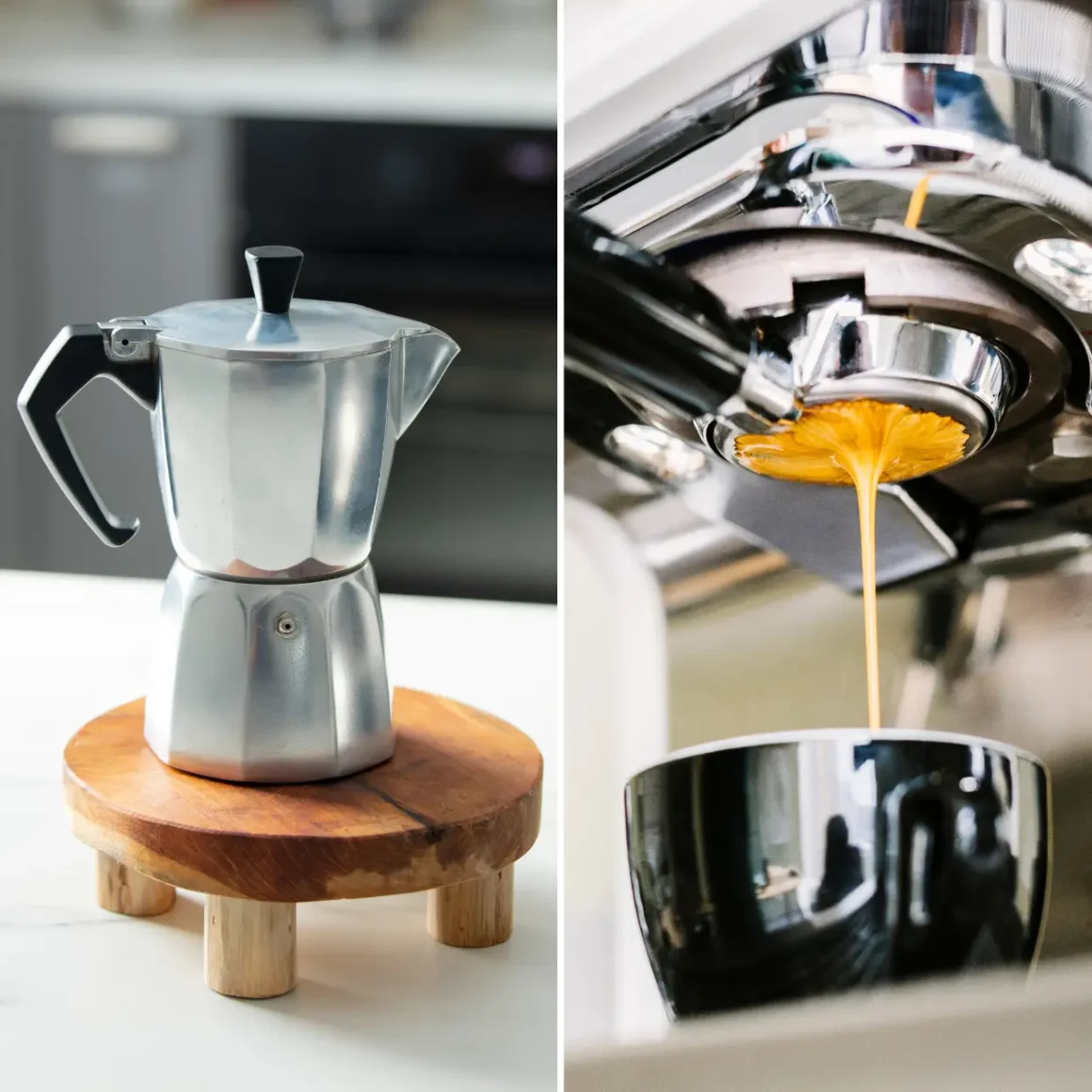
Coffee brewing methods have their regional preferences, with some being globally adored while others find admiration in specific pockets of the world.
- The Moka Pot’s Stature: Originating in Italy, this coffee machine found its fans predominantly in Europe and Latin America. Its popularity even influenced manufacturers outside Italy to craft their versions inspired by this brewing genius. In countries like Australia, this pot’s adoption surged, becoming an integral part of many households’ morning routines.
- Espresso Machines’ Worldwide Acceptance: The espresso, along with its variations like cappuccino and latte, found widespread admiration. In the UK, the 1950s saw a surge in its popularity, while in the US, the latte culture began to thrive.
Today, both of these unique coffee machines have carved their niches in the global coffee scene, each representing a unique facet of the world’s rich coffee tapestry.
Moka Pot vs Espresso Machine: How They Work
In the realm of brewing, the art and science of making that perfect cup of coffee can often be traced back to the equipment used. Two standout icons in this domain are the Moka Pot and the Espresso Machine, each with its unique mechanism and distinct taste profile. Delving into their workings reveals the nuances that set them apart and brings clarity to the age-old debate of preference.
The Mechanics of a Moka Pot: Simplicity and Elegance

The Moka Pot, often referred to as the stovetop coffee maker, embodies the essence of Italian coffee culture. With its uncomplicated design and physics-backed mechanism, it offers an authentic coffee experience.
Structure:
This coffee maker, particularly brands like the Bialetti Moka Pot and Grosche Moka Pot, consists of three main compartments.
- Lower Compartment: Filled with water and acts as the heating base.
- Middle Filter Basket: Houses finely milled coffee grounds.
- Upper Compartment: Collects the brewed cup of joe once the process is complete.
Brewing Process:
The brewing process for this method unfolds as follows:
- Begin by placing the finely ground coffee into the filter basket.
- Add water to the lower chamber and set the pot on the stovetop.
- As the water heats, steam is generated. This steam builds pressure that forces the water through the coffee-filled filter and into the upper compartment. In due time, you are rewarded with a rich and potent coffee.
The beauty of this stove-top coffee maker lies in its ability to produce coffee that mirrors the strength and robustness of espresso without the complexities of high-end machinery.
Espresso Machines: Engineering Meets Artistry
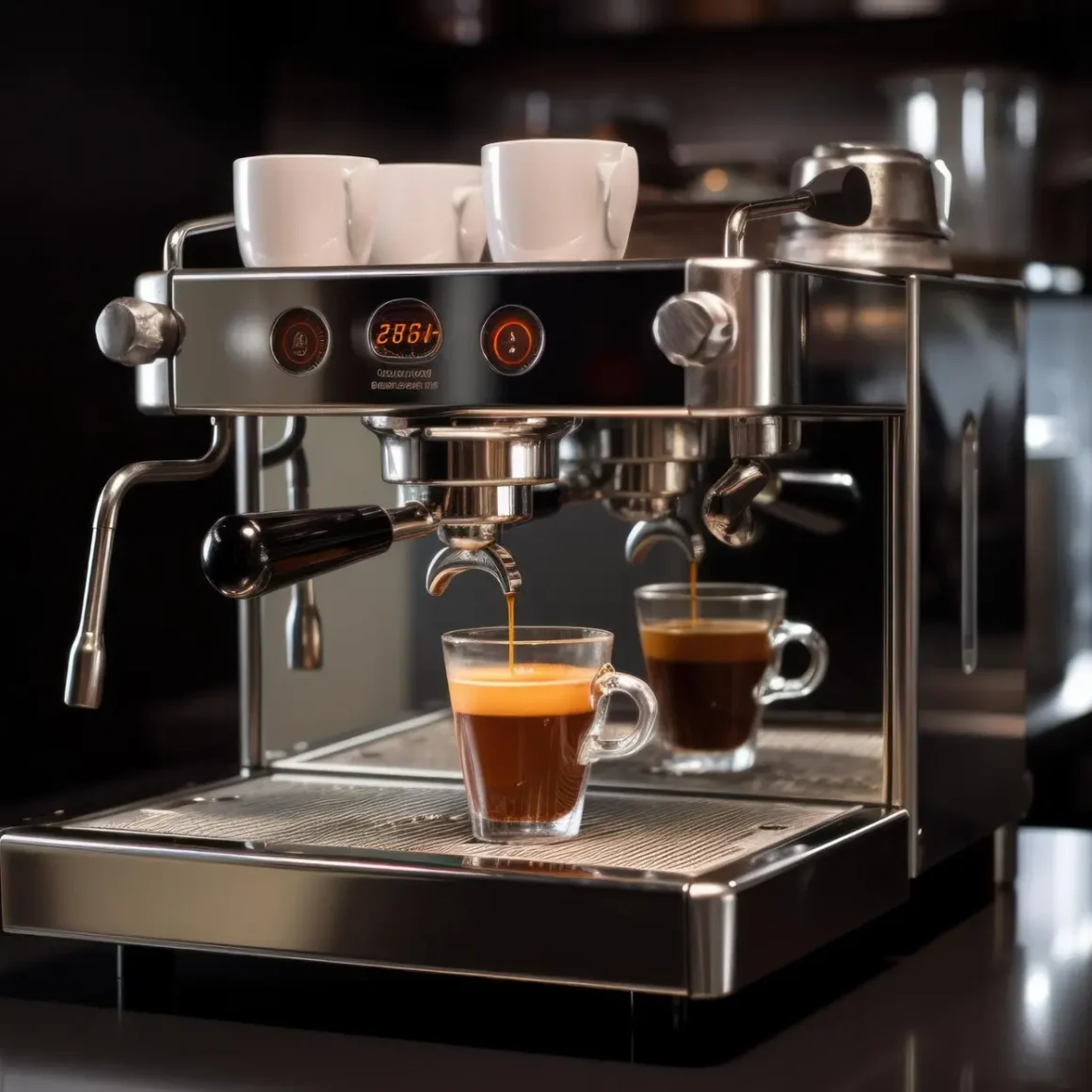
Espresso coffee maker devices are an amalgamation of engineering precision and the timeless art of coffee-making. Their intricate mechanisms stand testimony to the lengths enthusiasts go for that perfect espresso shot.
- Core Components:
- Water Heating Unit: Ensures water reaches the optimal temperature and maintains necessary pressure.
- Group Nozzle: Governs the flow and pressure of the water.
- Portafilter: A container with a handle that holds and compresses the coffee grounds, ensuring the water passes through them under pressure.
- Functioning:
- The finely ground coffee is compacted in the portafilter.
- The machine, via the water heater and group nozzle, forces hot water through these compacted grounds, resulting in a thick, potent cup of joe known as espresso coffee.
Whether manually operated or fully automatic, espresso machines allow for unparalleled control over the brewing process, opening the doors to a myriad of coffee-based beverages.
Maintenance and Durability: Which Lasts Longer?

When investing in brewing equipment, understanding its longevity and maintenance can often tip the balance of preference.
Maintenance
Maintaining your brewing equipment is essential to ensure its longevity and the quality of your brew.
- Regular Cleaning: Both Moka pots and espresso machines require routine cleaning to remove coffee residues, mineral deposits, and oils that can accumulate over time. Neglecting this maintenance can lead to clogs, foul tastes, and even damage.
- Component Maintenance: Maintenance tasks also involve examining and potentially replacing crucial components. For stove-top coffee makers, this may include inspecting and changing gaskets, while espresso machines may require periodic checks on filters, portafilters, and steam wands.
- Decalcification: Espresso machines are particularly susceptible to mineral buildup due to water hardness. Regular decalcification is essential to prevent scaling, which can damage the machine’s internal components.
Durability
The durability of brewing equipment depends on various factors, including the materials used, wear and tear resistance, and thoughtful design and engineering.
- Materials and Build: Durability hinges on the quality of materials and craftsmanship. Sturdy materials like stainless steel and well-constructed parts can significantly extend the lifespan of brewing equipment.
- Wear and Tear Resistance: Durability implies the ability of the equipment to withstand daily use without succumbing to wear and tear. This is especially important for components that are subject to constant pressure, such as pumps and valves in espresso machines.
- Design and Engineering: Thoughtful design and engineering contribute to durability by ensuring that the equipment can handle the stresses and strains of brewing without easily breaking down.
The Balance Between Maintenance and Durability
Finding the right equilibrium between maintenance and durability is key to maximizing the lifespan of your brewing equipment.
- Moka Pot: This coffee machine, with its simple design, is generally more straightforward to maintain. It has fewer components and is less prone to technical issues. However, regular cleaning and gasket replacement are essential for longevity.
- Espresso Machine: Espresso machines are more complex, but their durability can be extended with meticulous maintenance. High-quality machines are built to last, but they require regular cleaning, descaling, and part replacements to ensure a long lifespan.
Whether you prefer the simplicity of a coffee pot or the sophistication of an espresso machine, a balance between both maintenance and durability will ultimately lead to the extended enjoyment of your favorite brews.
Pros and Cons of Each Brewing Method

Understanding the strengths and potential drawbacks of each method can aid in making an informed choice.
Moka Pot:
- Pros: Produces robust coffee, retains warmth effectively, easy to clean, compact and travel-friendly, and affordable.
- Cons: Requires a medium-fine grind, potential for a slightly bitter taste if not brewed properly.
Espresso Machines:
- Pros: Brews potent coffee with rich layers, capability to make a variety of drinks, and offers significant control and customization.
- Cons: Achieving consistency can require practice, may need additional equipment, is often more expensive, and demands meticulous maintenance due to integrated electronics.
The choice between both of these coffee makers primarily hinges on personal taste and priorities. Reflect on what you value more in your coffee journey – simplicity and tradition or versatility and precision. Whatever you choose, the world of coffee welcomes all with open arms.
Espresso Machine vs Moka Pot: Flavor Profiles

Coffee connoisseurs worldwide often embark on the journey to identify the most exquisite taste profile that satiates their palate. Every brewing method imparts its unique set of characteristics to the final cup. The battle between the classic Moka pot and the espresso machine has been ongoing for years, both esteemed for their distinct flavor profiles. In this segment, we will unearth the intricacies of taste and texture offered by both, guiding you closer to your personal coffee nirvana.
Moka Pot Brew: Bold and Rich or Burnt?
Popularly known as the stovetop coffee maker, this coffee pot has charmed many households with its rustic, yet efficient brewing method. The taste it offers, however, can greatly vary based on execution.
- Deep and Potent: This coffee maker utilizes prolonged water and coffee ground interaction, resulting in a brew that is both bold and robust. This is the charm of Moka coffee.
- Nuances of Cocoa and Nuts: A properly brewed cup of this coffee often reveals delightful undertones of cocoa and nuts, adding depth to the overall experience.
- Balanced Acidity: Unlike some brewing methods, this coffee machine tends to produce coffee with an even acidity, pleasing those who prefer a smoother sip.
- Risk of Overcooking: A misstep with this coffee pot can lead to an overcooked or burnt taste, especially if the heat is too high or if it’s left on the stove for too long.
While the best coffee for Moka pot brings forth a full-bodied and flavorful brew, precision is essential to avoid tipping the scales towards a burnt flavor.
Espresso Shots: The Heart, Body, and Crema Explained
Espresso stands as the crown jewel for many coffee enthusiasts. Its concentrated burst of flavor, coupled with a velvety texture, makes it a sought-after brew. Let’s decipher its taste intricacies.
- Bold and Dynamic: Espresso coffee is renowned for its deep, lively flavor. It’s a concentrated burst of coffee goodness, derived from high-pressure extraction.
- The Crema’s Role: That golden, frothy layer atop an espresso shot, known as the crema, isn’t just for aesthetics. It imparts richness to the texture, adding to the coffee’s body.
- Palette of Tastes: The taste spectrum of espresso coffee can range from chocolaty to floral notes, depending on the beans and extraction.
- Memorable Aftertaste: The thick nature of espresso ensures it leaves a lingering aftertaste, making every sip an experience in itself.
The espresso coffee maker showcases the art of coffee brewing, with every shot capturing the essence of the bean in a brief yet memorable sip.
Modifying Variables: How to Achieve the Perfect Brew
Achieving the perfect brew isn’t just about choosing a method; it’s about mastering the variables involved.
- Water Temperature: It’s essential to get the water temperature right. Too hot, and you risk over-extraction; too cold, and you might under-extract, leading to a weak or sour taste.
- Grind Size: As previously discussed, for coffee pots, a medium-fine grind works best, resembling the consistency of table salt. Espressos, on the other hand, require a finer grind.
- Brew Time: While espresso shots take mere seconds, a Moka pot requires patience, often taking up to 10 minutes. Adjusting brew time can influence the strength and flavor profile.
- Pressure and Tamping: Especially vital for espressos, the pressure of extraction and the force used to tamp down the grounds can significantly impact the final shot.
By manipulating these variables, both novice and veteran coffee brewers can refine their technique, optimizing the flavor and aroma of their brew.
Which Brew Method Wins the Flavor Battle?
At the heart of the Moka pot vs. espresso machine debate lies the question of flavor supremacy. Both methods have their ardent supporters, but which truly offers a superior taste experience?
- Moka Pot: Renowned for its potent brew, this coffee machine comes very close to replicating the espresso experience. The bold taste it offers, especially with the right coffee grounds, can be deeply satisfying.
- Espresso: Authentic, rich, and slightly bitter, the espresso stands out with its unmistakable flavor. The addition of the crema on top further elevates the experience, making it a favorite for many.
While the stove-top coffee maker impressively replicates the espresso’s strength, when it comes to pure, authentic flavor, the espresso machine remains unrivaled. Yet, the final choice always rests on personal preference and the taste profile one seeks.
Moka Pot vs Espresso Machine: Cost and Accessibility

In the ever-evolving world of coffee, the debate between these two coffee machines transcends just flavor. Cost and accessibility play pivotal roles in a coffee enthusiast’s choice. In this section, we’ll break down the financial and availability aspects of both brewing methods, aiding you in making an informed decision.
Initial Cost: Moka Pot’s Affordability vs Espresso Machine’s Precision
Stepping into the world of coffee brewing often begins with an examination of the wallet. Initial investment can greatly vary depending on the chosen method.
- Moka-Pot: The charm of this stove-top coffee maker lies not only in its unique brew but also in its affordability. Premium brands typically range from $30-$100. However, even budget-friendly options don’t compromise much on coffee strength.
- Espresso Machine: True espresso machines aren’t as easy on the pocket. While capsule-based machines might fall within the $100-$150 bracket, semi-automatic domestic versions can soar up to $1200, reflecting your passion and commitment to espresso.
When it comes to initial costs in the Moka pot vs espresso machine debate, coffee pots often emerge as the more budget-friendly option, while espresso machines cater to those prioritizing precision over price.
Espresso Machine: A Luxurious Coffee Investment
Espresso machines, beyond their operational prowess, often represent a luxury in the coffee world. Let’s delve into the cost attributes associated with this investment.
- High-Quality Brewing: The allure of espresso machines is their ability to produce café-quality shots, ensuring you get value for your money.
- Price Variance: Espresso machines have a vast price range. While basic models might cater to budget-conscious enthusiasts, premium models embody the pinnacle of coffee craftsmanship.
- Added Features: With higher price tags come added features, such as milk steamers, customizable shot sizes, and digital interfaces, enhancing the brewing experience.
An espresso coffee machine is undeniably an investment, but for those who view coffee brewing as an art form, the expense becomes a worthwhile pursuit.
Long-Term Maintenance Expenses
Beyond the initial purchase, it’s essential to consider the recurring costs associated with maintenance and upkeep.
- Moka Pot: Its simplistic design translates to minimal maintenance. Occasionally replacing gaskets and keeping them clean suffice, ensuring prolonged use without significant additional expenses.
- Espresso Machine: Regular cleaning, descaling, and potential part replacements can add up over time. Capsule-based machines also introduce the recurrent cost of pods.
Considering long-term expenses, the stove-top coffee machine generally proves to be the more economical choice, while the espresso machine demands consistent care and investment.
Balancing Cost and Convenience
Cost considerations should be balanced against the convenience offered by each brewing method.
- Moka Pot: Compact and easy to use, it’s an ideal choice for those seeking a straightforward brewing process without any bells and whistles.
- Espresso Machine: While some models might be more complex, the convenience of brewing a café-quality shot from the comfort of your home is unparalleled.
In the juxtaposition of cost and convenience, your personal priorities dictate the winner. Some might lean towards the stove-top coffee maker’s simplicity, while others may find the espresso machine’s superior output worth the price.
The Accessibility Factor: Which is Easier for the Average Joe?
While cost is a significant factor, accessibility, in terms of ease of use and learning curve, also plays a crucial role in the decision-making process.
- Moka Pot: With its intuitive design, this coffee pot is beginner-friendly. Even those new to coffee brewing can quickly grasp its workings.
- Espresso Machine: Depending on the model, there might be a steeper learning curve. However, once mastered, it offers a range of customizable options that the coffee pot can’t match.
In the accessibility showdown of the Moka pot vs espresso machine, the stove-top coffee maker generally emerges as more user-friendly for newcomers, while the espresso machine caters to those willing to invest time in mastering the craft.
Environmental Considerations: Sustainability in Brewing

In our collective pursuit of that perfect cup of coffee, there’s an underlying responsibility we owe to our planet. Eco-conscious brewing has become more than a trend; it’s a necessity. As we compare the environmental footprints of the best Moka pot and the espresso coffee maker, it becomes evident that sustainability and caffeine can co-exist harmoniously.
Moka Pot: Waste and Eco-Friendly Aspects
When we talk about sustainable coffee brewing, this coffee machine often emerges as a commendable contender. It blends traditional brewing techniques with a minimal ecological footprint.
- Materials and Durability: This coffee maker is usually crafted from durable metals like steel or aluminum, making it a green alternative to many plastic counterparts. Brands like Bialetti have shown that a well-maintained Moka pot can last years, only needing the occasional replacement of rubber gaskets.
- Energy Efficiency: A standout feature of this coffee machine is its ability to brew without electricity. Being versatile enough for stovetops, including gas, it significantly cuts down on energy consumption.
- Waste Reduction: Unlike some modern coffee machines, this coffee pot avoids single-use components due to its built-in filter system. This leads to reduced waste, aligning with eco-conscious living.
This coffee machine, with its harmonious blend of tradition and eco-sensitivity, truly champions the cause of sustainable brewing.
Espresso Machine: Energy Consumption and Environmental Footprint
While the espresso coffee maker has been synonymous with rich, aromatic coffee, it’s essential to scrutinize its environmental implications.
- Traditional Models: Many espresso machines maintain a boiler system, heating up large water quantities. This sustained heat, primarily not just for espresso brewing, can be energy-intensive. With daily consumptions ranging from 12kWh to 50kWh, it’s evident that less frequently used machines could have an environmental footprint surpassing even average households.
- Energy Expenditure: Espresso machines rely on heating elements to produce the high temperatures needed for brewing. These elements can be energy-intensive, especially in larger or commercial machines.
- Carbon Emissions: Energy consumption directly affects carbon emissions. The more energy an espresso machine uses, the higher its carbon footprint. Reducing energy consumption can help lower carbon emissions.
Understanding the link between energy consumption and carbon emissions is essential. By opting for energy-efficient models and employing responsible usage practices, we can minimize the environmental impact of our espresso brewing habits and move towards a more sustainable coffee culture.
Tips for a Greener Coffee Experience
Bridging the gap between our love for coffee and environmental responsibility is possible with conscious choices. Here are some pointers to make your brewing experience greener:
- Opt for Sustainable Gear: Choose equipment, like the best Moka pot, that has a reputation for durability and eco-friendliness.
- Limit Energy Consumption: If using an espresso coffee maker, consider models with modern, energy-saving features like induction heating.
- Mind the Add-ons: Remember, extras like steaming milk can add to the environmental footprint. Consider alternatives or use them efficiently.
- Regular Maintenance: Whether it’s changing gaskets in a stove-top coffee maker or ensuring your espresso machine’s boiler is insulated, regular upkeep can prevent energy wastage.
Cultivating a green coffee ritual isn’t just about choosing the right equipment; it’s about consistently making environmentally conscious choices at every step of the brewing process.
Conclusion
Navigating the realm of coffee brewing, the Moka pot vs espresso machine debate presents coffee lovers with intriguing choices, each brimming with its distinct merits. From the stove-top coffee maker’s undeniable affordability and environmentally friendly design to the espresso machine’s unparalleled taste precision and rich, velvety outputs, our journey has revealed that coffee excellence can be achieved in more ways than one. While the best Moka pot may appeal to the eco-conscious brewer on a budget, the espresso coffee maker beckons to those seeking the epitome of flavor sophistication. Ultimately, the choice rests not on which is superior, but on which resonates most with an individual’s preferences, values, and coffee aspirations. After all, in the vast landscape of coffee excellence, there’s room for multiple brewing champions.
FAQ
Can you make lattes and cappuccinos with a Moka Pot?
Yes, you can use this coffee machine, but you'll need a separate method for frothing milk.
How often should I clean my Moka Pot or Espresso Machine?
Both should be cleaned after each use to maintain flavor and prevent residue build-up.
Which brewing method is more energy-efficient: the Moka Pot or the Espresso Machine?
The stove-top coffee maker is more energy-efficient as it can operate without electricity, unlike most espresso machines.
Can Moka Pot Brew match the flavor intensity of an Espresso Machine?
While Moka Pot coffee is robust and flavorful, it doesn't match the exact intensity of espresso.
What's the lifespan of a typical Moka Pot compared to an Espresso Machine?
Moka Pots generally have a longer lifespan with minimal maintenance, whereas espresso machines might require more regular upkeep.
How do different grind sizes affect the brew in Moka Pots and Espresso Machines?
Finer grinds are used for espresso machines to achieve a concentrated shot, while Moka Pots use a slightly coarser grind, resembling fine table salt.








